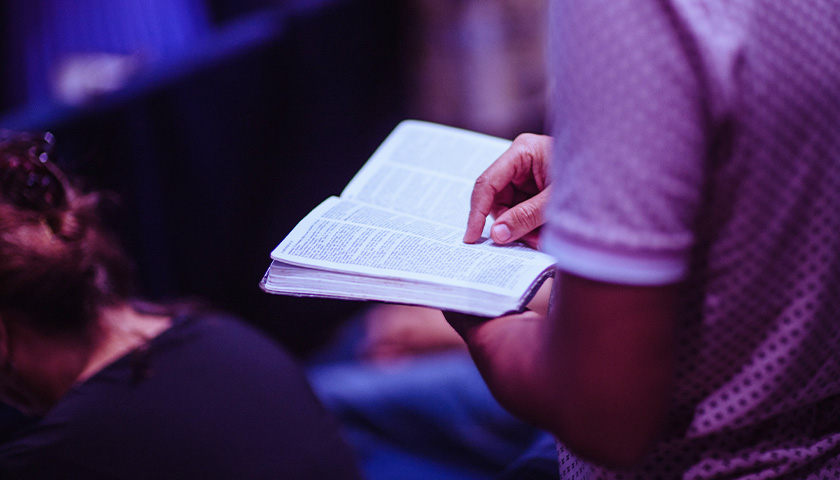by Sarah Estelle
Many American voters head into midterm elections wearied by political polarization. Subjects that might have merely led to an uncomfortable dinner table conversation yesterday are more likely to be relationship-ending today.
It’s often assumed that political positions come with a Democrat or Republican party label. But beneath many of the most divisive issues of our time – think the COVID-19 pandemic response, the 2020 election, and the overturning of Roe v. Wade – lies an issue that is neither red nor blue. Would you believe me if I said religious liberty is not actually a partisan issue?
While religious liberty has long been perceived to be a “conservative” value, a careful study of state law helpfully complicates that simplistic narrative. A new project by the Center for Religion, Culture & Democracy reveals a surprising reality: several traditionally blue states do a better job protecting religious liberty than many red states.
The innovative project Religious Liberty in the States scores and ranks the 50 states on how well each protects religious liberty through state law. The project is a statistical index and comprehensive catalogue of legal safeguards for the free exercise of religion, covering 29 items in total, including protections for religious exemptions for school immunization requirements; businesses to refuse to participate in same-sex weddings; absentee voting on religious holidays; health care provisions that allow for provider refusal of abortion, sterilization, and contraception; and many others.
As the index finds, the evolution of state law on religious liberty issues has resulted in no clear partisan divide. There are both red and blue states at the top and bottom of the rankings. “Red” Mississippi ranked first, followed closely by “blue” Illinois. Texas, known for its strong evangelical voter base, is smack dab in the middle. While a few of the bluest states rank in the bottom three – California (48th) and New York (50th) – other blue states such as Washington (5th), Maryland (8th), Connecticut (11th), and Maine (14th) scored in the top third. Presidential politics and political stereotypes simply cannot explain the pattern of religious protections at the state level.
Scoring at over 80% of the possible protections found in the project’s research, the top two states Mississippi (1st) and Illinois (2nd) are far ahead of the third-place finisher, New Mexico (61 percent). Contributing to Illinois’ success is its Religious Freedom Restoration Act (RFRA) passed in 1998 that safeguards a wide variety of religious activities from government burden and its Health Care Right of Conscience Act (1977), which protects health care facilities and personnel from participating in any phase of patient care that conflicts with their conscience, except in the case of emergencies. Mississippi’s health care conscience provision goes one step further, extending conscience protections even in the case of emergencies.
When we dig beyond partisan binaries, we find that religious liberty is a shared value among both progressive and conservative citizens. For example, while Connecticut was among one of the first states to pass legislation recognizing same sex marriage, it was also the very first state to allow clergy, churches, and “qualified church-controlled organizations” to refuse participation in weddings that would violate their religious beliefs. Granting religious exemptions to individuals or organizations does not eliminate the right granted to others, but it negotiates a balance where people with different values can achieve their fundamental goals.
In a pluralist society, people will disagree. But religious liberty safeguards help us co-exist.
Despite this encouraging news, there is still much room for improvement. The vast majority of states (43 of 50) provide 50 percent or less of the possible legal safeguards identified in the index and the median American lives with only 35 percent of the possible safeguards in place. Check the index website to see where your state can improve compared to other states. Hold your elected officials accountable in advancing religious liberty safeguards by pointing to other examples, such as Illinois’ general conscience provision for health care providers or Alabama’s Religious Freedom Restoration Act that was codified in its constitution. We should not imagine religious liberty to be a foregone conclusion in more conservative states nor infeasible in more progressive states.
Providing space for people to live according to conscience is perhaps the real American dream. Those who are not concerned with religious liberty safeguards should care about living in harmony with those who have deeply held but differing views. This is the basis of self-governance and the American experiment. Pursuing liberty for everyone by expanding the space for deeply held and sincere beliefs, including for the religious, is a principled and proven way of living in a diverse society and the surest way to dial back polarization.
Religious liberty isn’t fundamentally a partisan issue even if it often seems to be. It’s the number one issue we can come together on in an age of extreme polarization – and that should give us hope.
– – –
Sarah M. Estelle is a research fellow of the CRCD, associate professor of economics at Hope College (Holland, MI), and the founding director of Hope’s Markets & Morality student program.
Photo “Person Holding Bible” by Luis Quintero.




